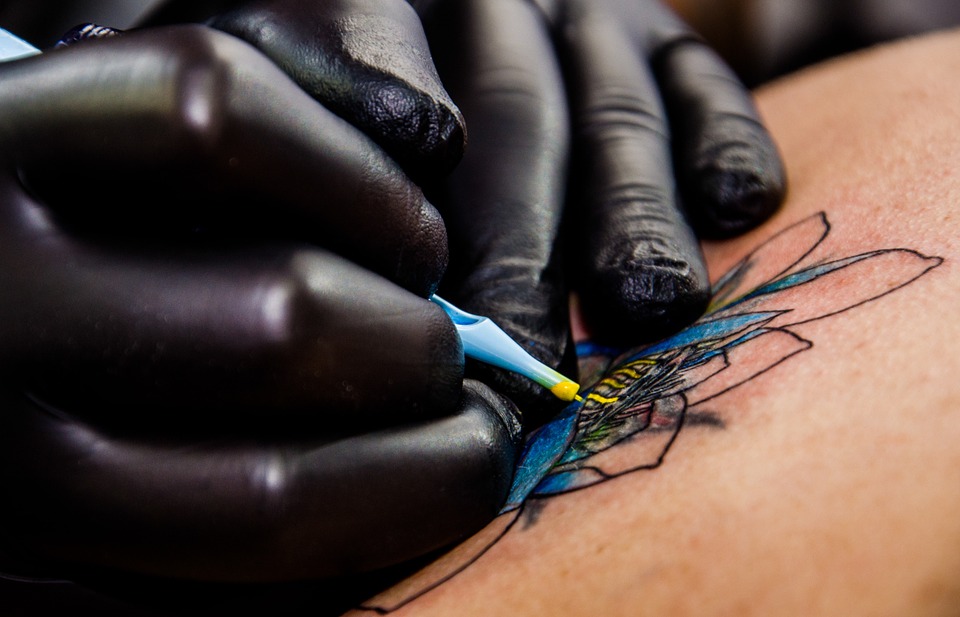History of Tattoo Art
According to a report by the Pew Research Center, about 36 percent of Americans aged 18-35 today have at least one tattoo. This is more than one-third of America’s young adults. As a result, it is no surprise that the tattoo industry is the sixth fastest-growing retail business in America, as determined by the U.S. News & World Report. This has translated to online interest as well, as there are more than 147 million tattoo related searches each month on Google.
Twenty five years ago, tattoos were quite common on sailors, military and prison inmates. However, if you looked at accountants, pro ping-pong players or even shoe salesmen, it would have been pretty rare to find some ink.
Ironically, tattoos have been around since the beginning of human history. The word ‘tattoo’ is thought to be derived from both the Polynesian “ta”, which means “to strike”, and the Tahitian “tatau”, which means “to mark.” While the origin of the tattoo remains a mystery, scientific evidence proves that tattoos have been a part of human culture for thousands of years.
In 1991, German hikers on the Oztal Alps (near the border between Italy and Austria) found the mummified remains of a prehistoric human. Carbon dating proved that the human, named Ötzi, had been mummified more than 5,300 years ago. Ötzi was discovered with primitive tools and arrows, but his most unique feature was that his body was adorned with no less than 57 tattoos, all the way from his upper neck to his ankles.
Findings similar to this continuously have proven that tattoos have been a part of human societies since their inception, as parts of rituals and cultures throughout history and across the globe.
Tattoo Art Flows into Mainstream Ads
If you fast-forward to 2005, you will notice our society still held prejudices against tattoos and, while some people were getting them on their own, no one would say tattoos were a part of pop culture. However, this changed the moment tattoos stepped into society’s limelight, which can be pinpointed to a very specific event: the launching of the first popular tattoo TV show, “Miami Ink”. A legendary shop on South Beach, “Miami Ink” housed a unique mixture of talented and charismatic tattoo artists. Only the minority of people with tattoos knew what the inside of a tattoo studio was like before the show aired. Many weren’t privy to the amazing work being done there or to the dynamic personalities and various styles of different artists. It made for good TV though, so “Miami Ink” owner, Ami James, connected with a major network and ran this reality TV show in his shop. It was a huge success and it changed everything.
Many tattoo artists have been called on to help corporation’s brands gain an edge with younger consumers and convey a sense of originality. While tattoos were once considered outlawed art, they have seeped from the skin of consumers into the fabric of advertising and marketing today.
Tattoos were at first trendy, but are now common as a form of personal expression. They are appearing in magazines, online ads and TV commercials to sell a range of mass-appeal products looking to communicate an image of hipness or edginess, or just to stand out. For example, Converse has tattooed versions of its Chuck Taylor sneaker, and it has created an ad in which a man with facial tattoos is photographed with a pair of shoes adorning his neck.
The Future of Tattoos
While it is impossible to know what the future holds, based on the trends over the past few decades, it seems that tattoos are here to stay. As with fashion trends, tattoo trends may wax and wane in popularity, but it is unlikely considering how this art form has grown in recent years. Consider the evolution of tattoo supplies, for example. Tattoo supplies have changed so much to meet consumer demands over the past few decades, first with manufacturers working to produce sterile inks on the emergence of organic and vegan-friendly tattoo ink. Other tattoo equipment has evolved as well, but the development of products like topical anesthetics and other things that make getting a tattoo more comfortable that are most telling about the future of tattoos. Because these are factors that impact consumers directly, they continuously evolve to meet progressively higher standards, individuals will only appreciate the art form more and lust for more tattoos.
For more information or to get started on your next tattoo contact Tattoo Consortium with the link below!







Marcus N Aubrey Vittonel liked this on Facebook.